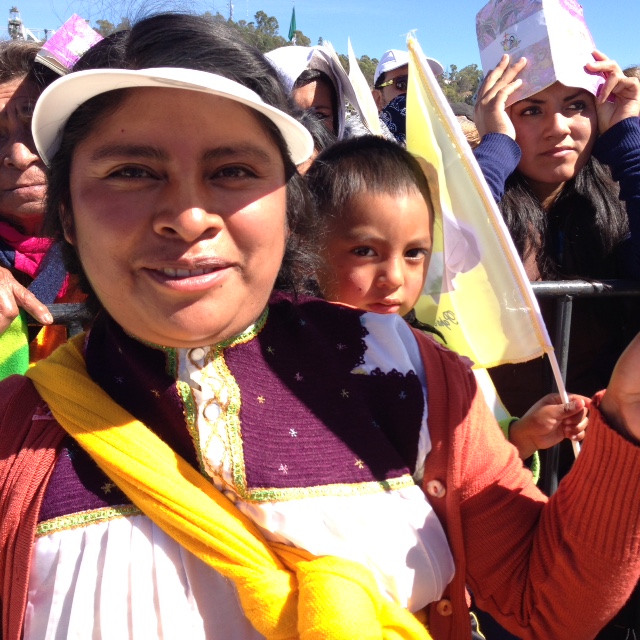
Dropping down into San Cristobal de Las Casas in a helicopter and seeing all the beautiful faces and traditional clothing of the indigenous people there waiting for Pope Francis was for me the most exhilarating moment of the Papal trip to Mexico.
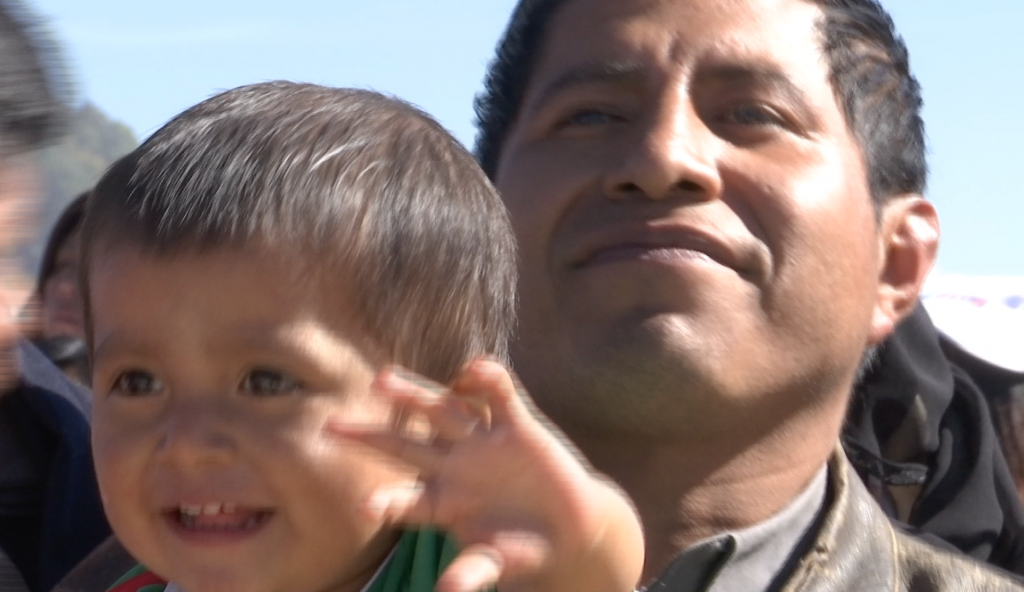
AP Television VJ Paolo Santalucia and I were chosen along with three other journalists in the Papal entourage to be in the “molto ristretto” pool that would fly into San Cristobal de Las Casas in a helicopter (By the way, “molto ristretto” in this case is not a kind of espresso, it means a tight pool). We flew from Mexico City to Tuxtla Guttierrez, the capital of the southern Mexican state of Chiapas. At the airport in Tuxtla there were five helicopters waiting- one for the Pope and the others for a few journalists, members of the Pope’s security and a few Vatican officials. For once, I was one of the first people to scramble out the back door of the papal plane and we hustled across the tarmac to our waiting helicopter. Paolo and I climbed in the back of helicopter number four with Spanish journalist Juan Vincente Gonzalez Boo, and a Mexican Security flack. Our fearless leader from the Vatican Press office Matteo Bruni sat in the front with the pilot (more on Matteo in a later post). When we stepped in, the cabin space seemed surprisingly hot and cramped but I was pleased that we could fly with the windows open. The pilot popped his head through the door before takeoff to tell us it would be about a 20-minute ride.
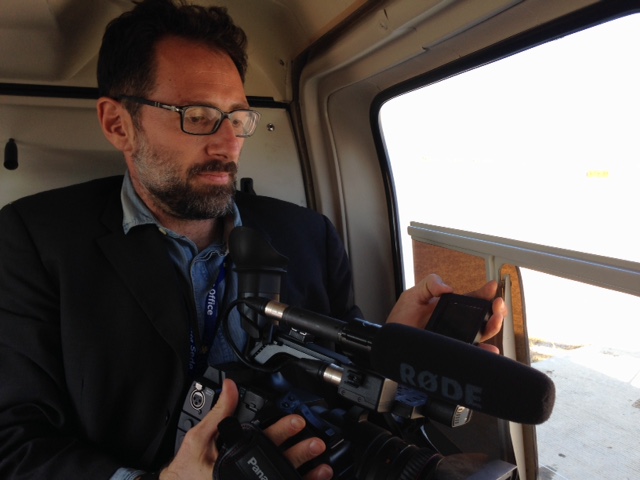
And then we were off, the chock-chock-chock-chock as the rotors whizzed around slowly easing us off the ground and up into the air. We swept quickly across the valley and up into the green, rugged hills. I loved it.
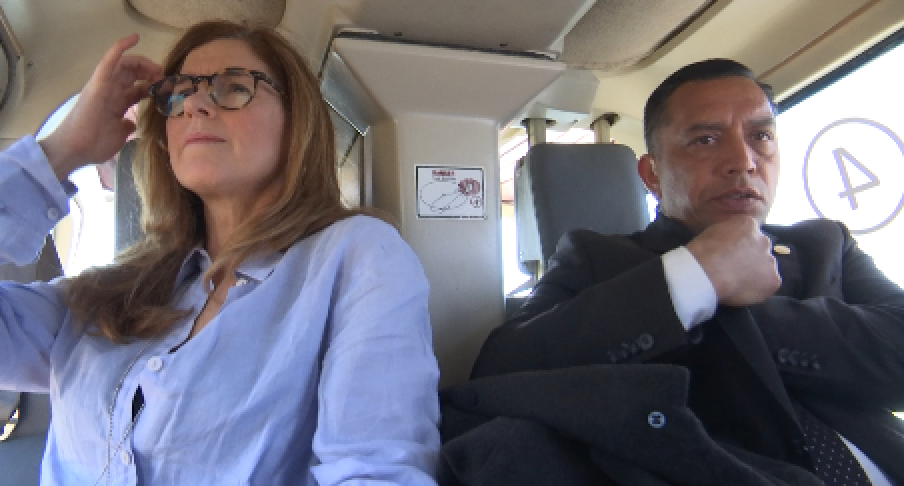
A little background here on Chiapas. Chiapas is the poorest state in Mexico with 76-percent of the population living in poverty according to government statistics and 32-percent in extreme poverty. Pope Francis’ choice of visiting Chiapas, celebrating the indigenous populations and recognizing their traditions, was apparently met with some resistance by both the church hierarchy in Mexico and the government.
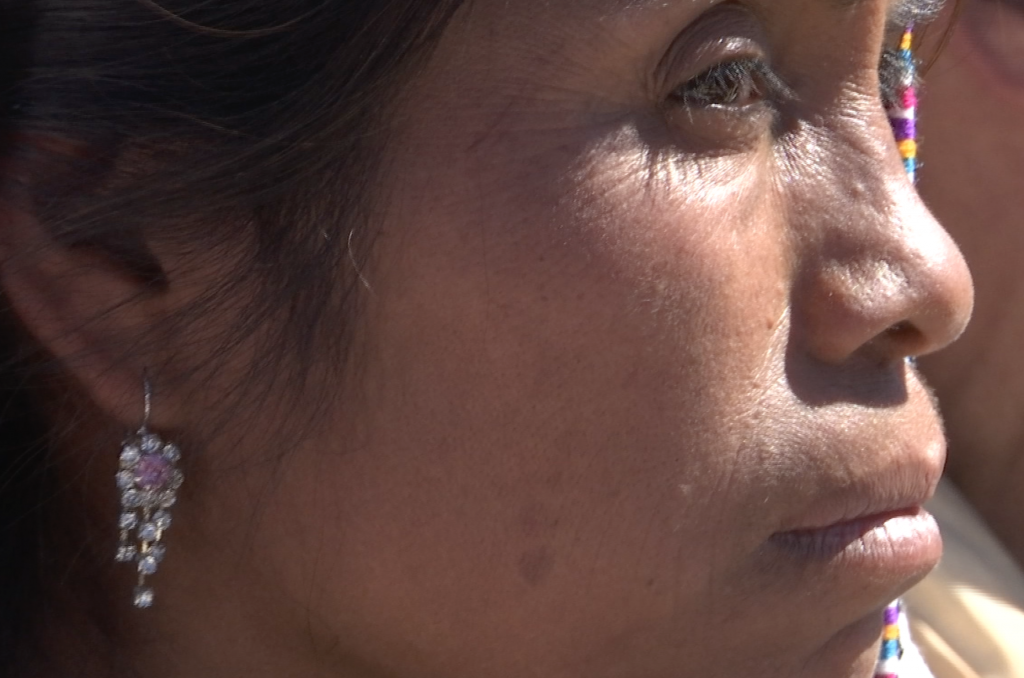
As we came down into San Cristobal de Las Casas we could see people rushing to the Mass site in the municipal sport fields. Officials estimated that there were 100,000 people there. It was a feast for the eyes, with men and women in colorful traditional dress and an altar set up with giant wooden statues of jaguars, hens and other animals.
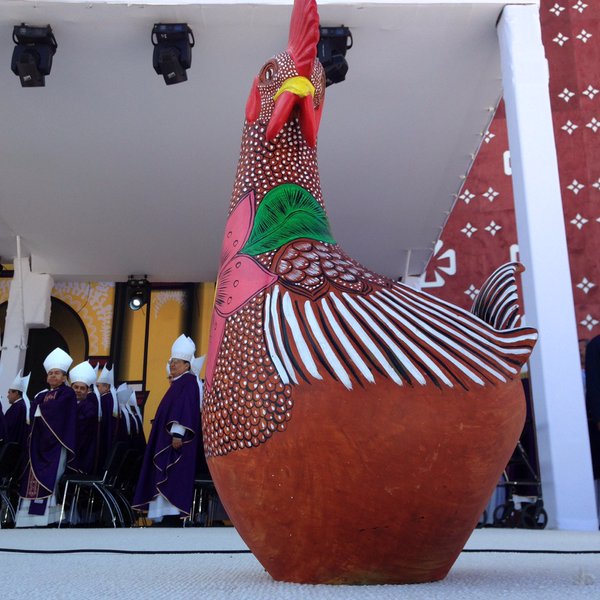
Paolo and I wandered through the crowd taking video and pictures. Many of the people did not speak Spanish so it was difficult to speak to them. In fact, the Mass was partially conducted in three indigenous languages Ch’ol, Tsotsil, and Tseltal and at the end of the Mass, Pope Francis issued a decree authorizing the use of these languages in liturgical ceremonies.
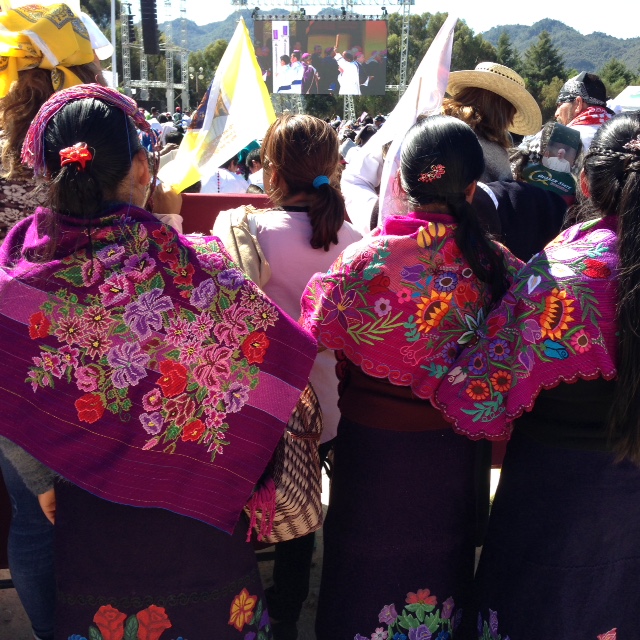
Speaking to the crowd, the Pope said, “On many occasions, in a systematic and organized way, your people have been misunderstood and excluded from society. Some have considered your values, culture and traditions to be inferior. Others, intoxicated by power, money and market trends, have stolen your lands or contaminated them. How sad this is!”
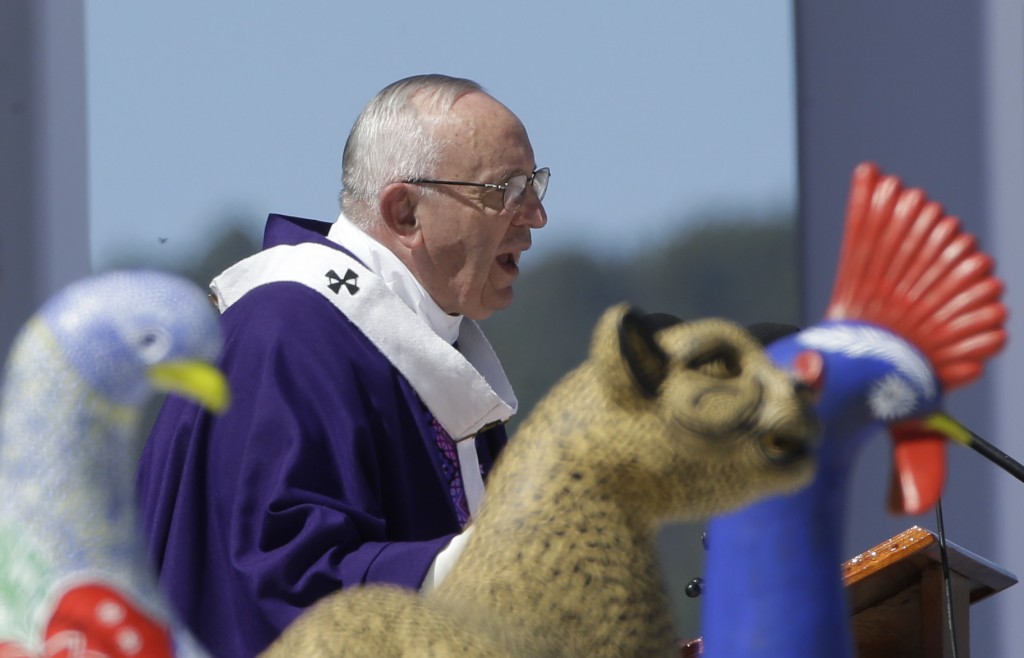
The Pope then asked for forgiveness.
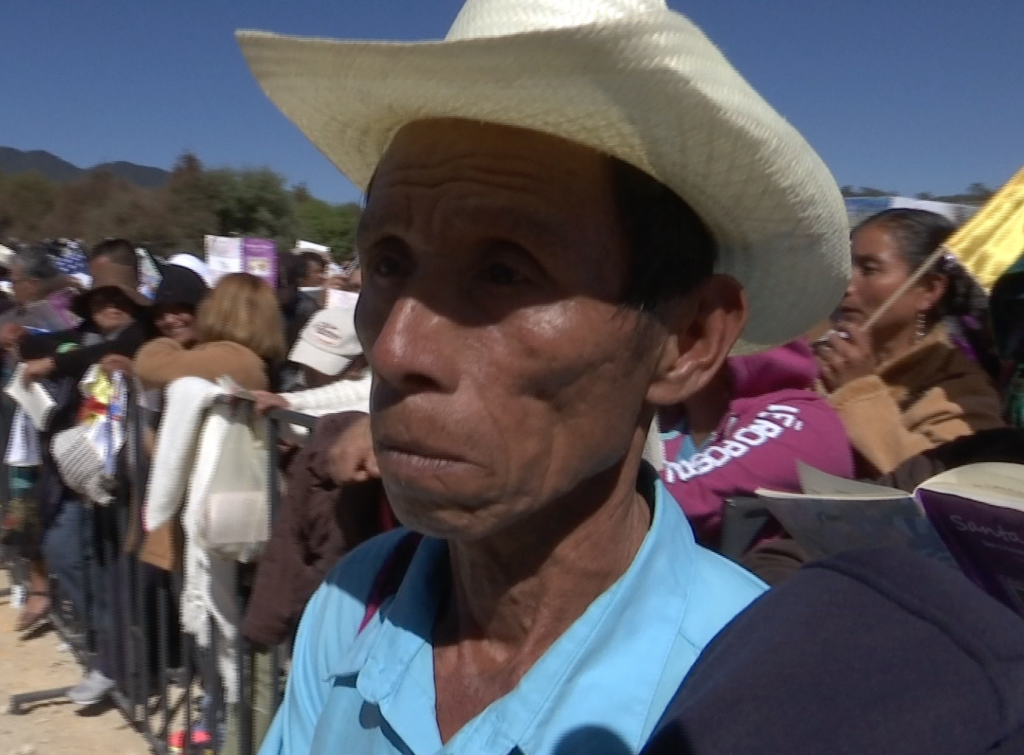
In the afternoon the Pope visited the Cathedral of San Cristobal de Las Casas. In an important symbolic gesture, Francis prayed alone before the tomb of Bishop Samuel Ruiz. (See my notes on him in earlier blog post: “Reaching the Ragged Edges in Mexico”). Ruiz, who died in 2011, dedicated his life to working with the indigenous people in Chiapas, learning their languages and ministering to them, even at the risk of running afoul of the Vatican.
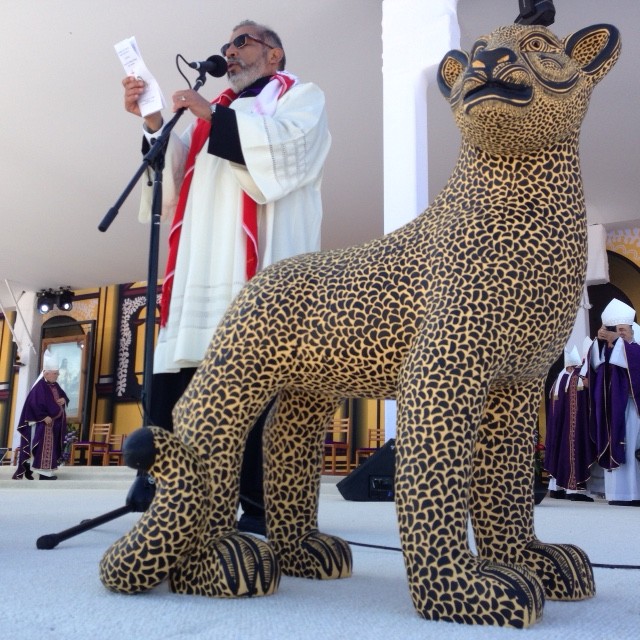
Blog Readers – I am going to cut this post short here and leave it just on Chiapas so I have more space for photos. Tomorrow I will write Part III on my Mexico series. Pope Francis Challenges the Narcos in the Tierra Caliente and then Part IV Pope Francis Meets with Prisoners and Visits the Border in Cuidad Juarez.
A big thank you to AP photographer Gregorio Borgia for letting me use some of his extra photos that were not used by AP in this blog post. Also a thank you to AP video-journalist Paolo Santalucia from whose video I have made many freeze-frames.
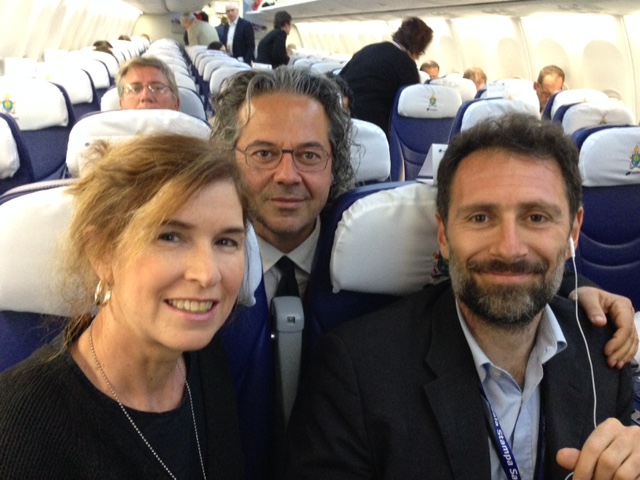
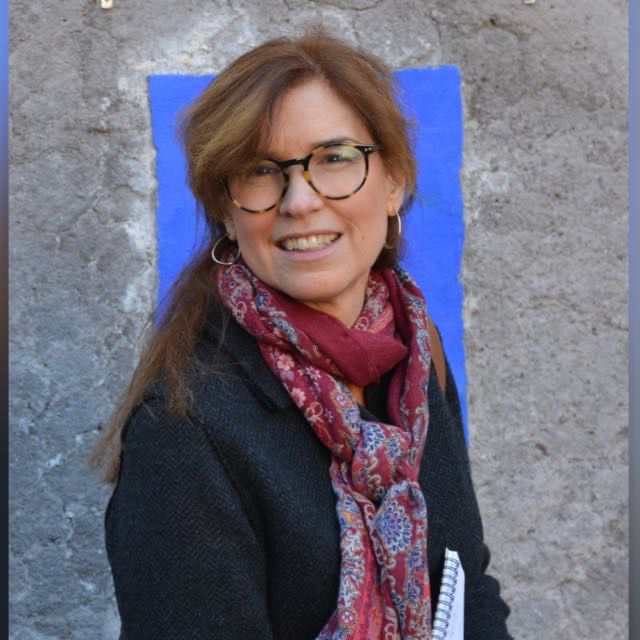
Thanks so very much for these amazing photos, and for your wonderful words. Chiapas has been the center of political struggle in Mexico, over many years various rebels have had strongholds there, and often the army has had to go into San Cristobal to sort things, and to reestablish the reign of the government in Mexico City, which I believe the indigenous people regard as corrupt. Their extreme poverty, their strong ethnicity, and their maintaining languages and culture other than Spanish and the rest of Mexico, all contribute to the unrest and frustration. Pope Francis was very courageous to defy the age old alliance of the Church with those in power, and make these visits. In my eyes, he really is a hero for this. But it will not make a lasting effect unless he is able to install bishops and priests in Chiapas who will be committed to the people, learn their languages and share their pain. The Mexican diocesan structures I think don’t encourage this attitude, and work to undo all this among the people. And that’s why pentecostals are gaining ground there.
Fascinating comment Nancy. It is interesting what you say about the Pentecostals gaining ground there. I am not surprised. I also think you are right about the Bishops. However, there was Bishop Samuel Ruiz who, from what I have read, seems like an extraordinary man who dedicated his life to the indigenous people of Chiapas. It is significant that the Pope prayed at his tomb and maybe that will send a message to some of the powerful Mexican Church leaders who spend too much time snuggling up to the political leaders.